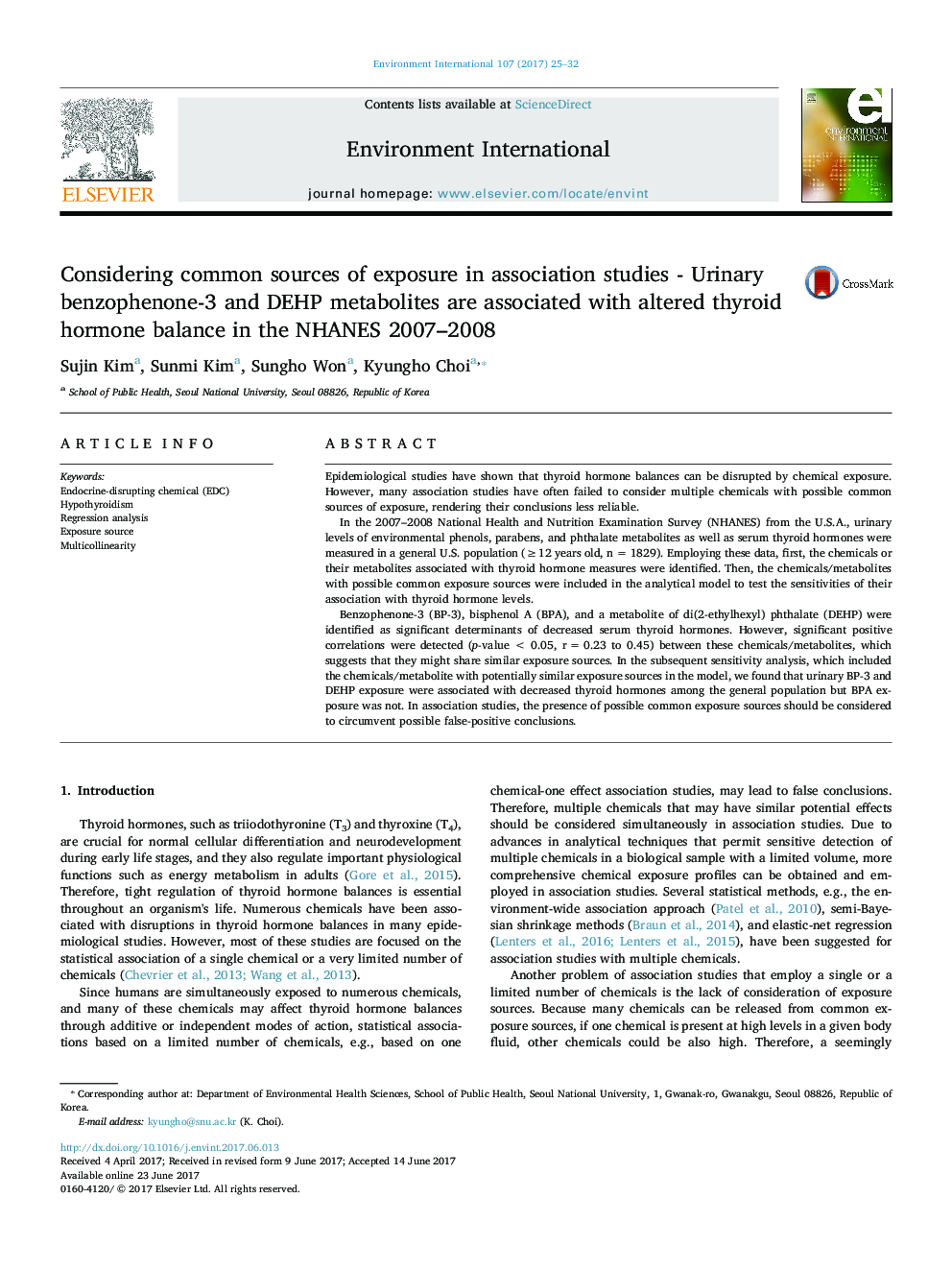| Article ID | Journal | Published Year | Pages | File Type |
|---|---|---|---|---|
| 5748302 | Environment International | 2017 | 8 Pages |
â¢Urinary chemicals associated with thyroid hormones were determined.â¢General U.S. adult population of NHANES 2007-2008 was studied.â¢Benzophenone-3 and MEHHP were associated with decreased thyroid hormones.â¢Association of BPA on thyroid hormone levels disappeared in sensitivity analysis.â¢Association studies should consider chemicals with common exposure sources.
Epidemiological studies have shown that thyroid hormone balances can be disrupted by chemical exposure. However, many association studies have often failed to consider multiple chemicals with possible common sources of exposure, rendering their conclusions less reliable.In the 2007-2008 National Health and Nutrition Examination Survey (NHANES) from the U.S.A., urinary levels of environmental phenols, parabens, and phthalate metabolites as well as serum thyroid hormones were measured in a general U.S. population (â¥Â 12 years old, n = 1829). Employing these data, first, the chemicals or their metabolites associated with thyroid hormone measures were identified. Then, the chemicals/metabolites with possible common exposure sources were included in the analytical model to test the sensitivities of their association with thyroid hormone levels.Benzophenone-3 (BP-3), bisphenol A (BPA), and a metabolite of di(2-ethylhexyl) phthalate (DEHP) were identified as significant determinants of decreased serum thyroid hormones. However, significant positive correlations were detected (p-value < 0.05, r = 0.23 to 0.45) between these chemicals/metabolites, which suggests that they might share similar exposure sources. In the subsequent sensitivity analysis, which included the chemicals/metabolite with potentially similar exposure sources in the model, we found that urinary BP-3 and DEHP exposure were associated with decreased thyroid hormones among the general population but BPA exposure was not. In association studies, the presence of possible common exposure sources should be considered to circumvent possible false-positive conclusions.
